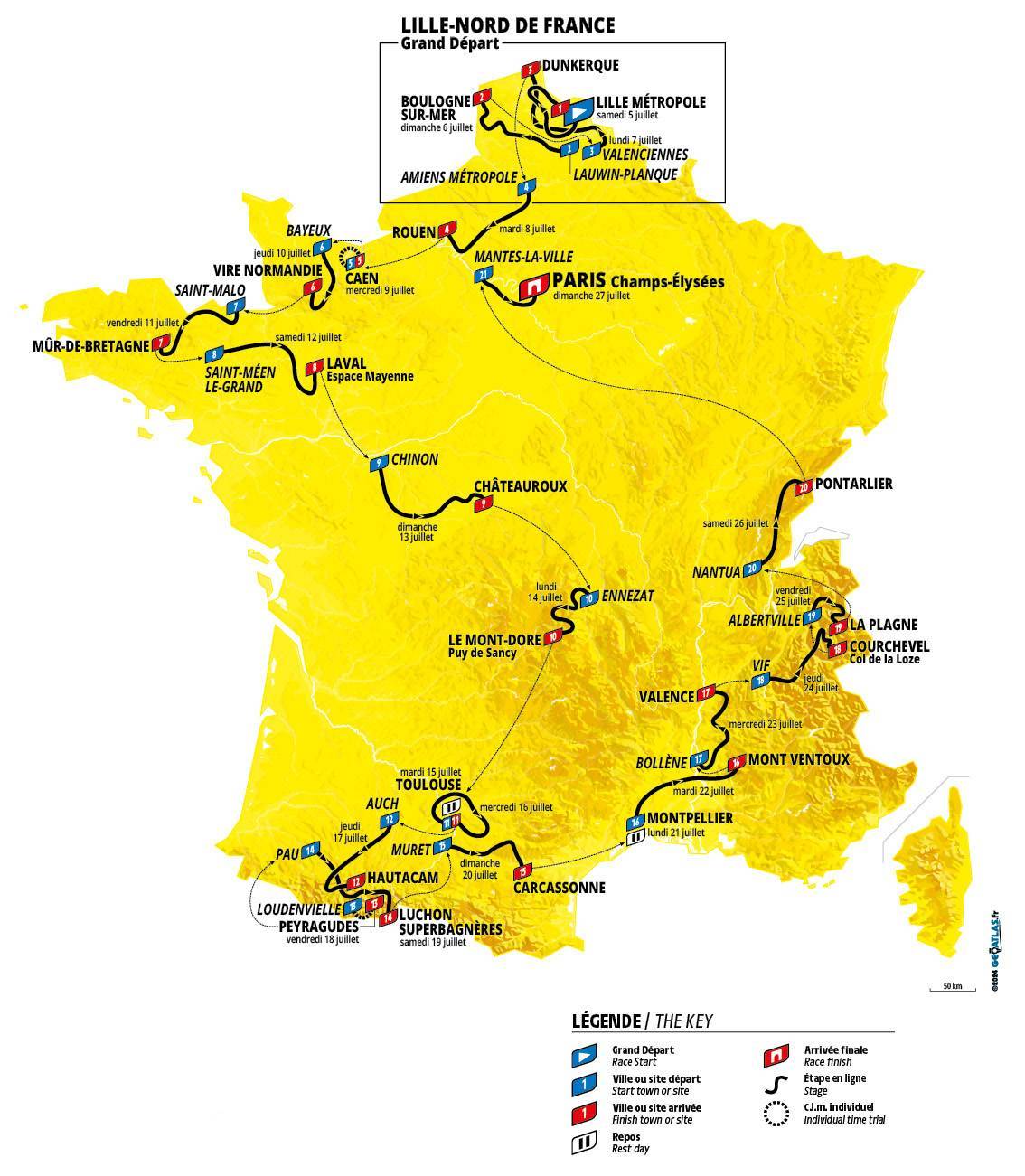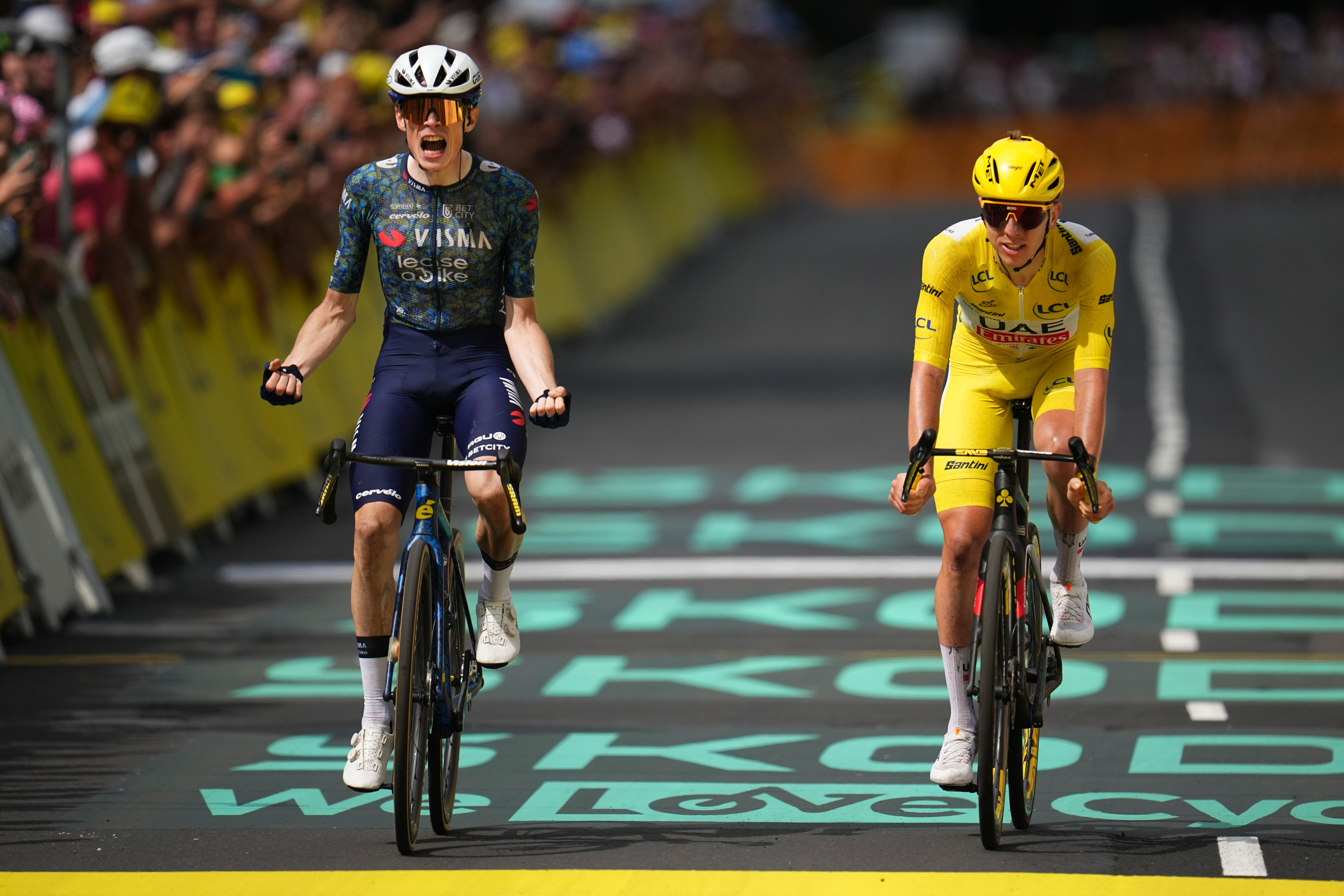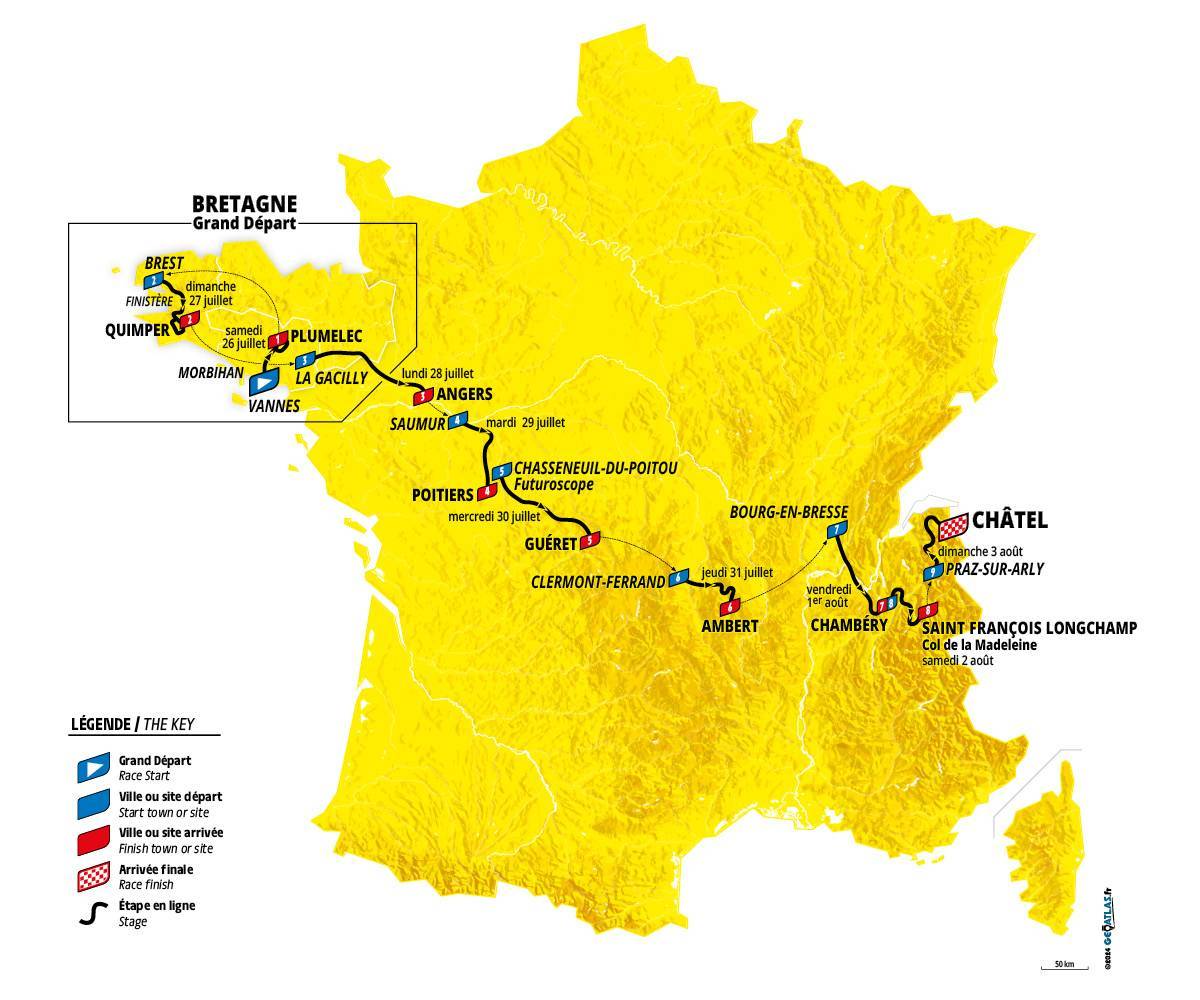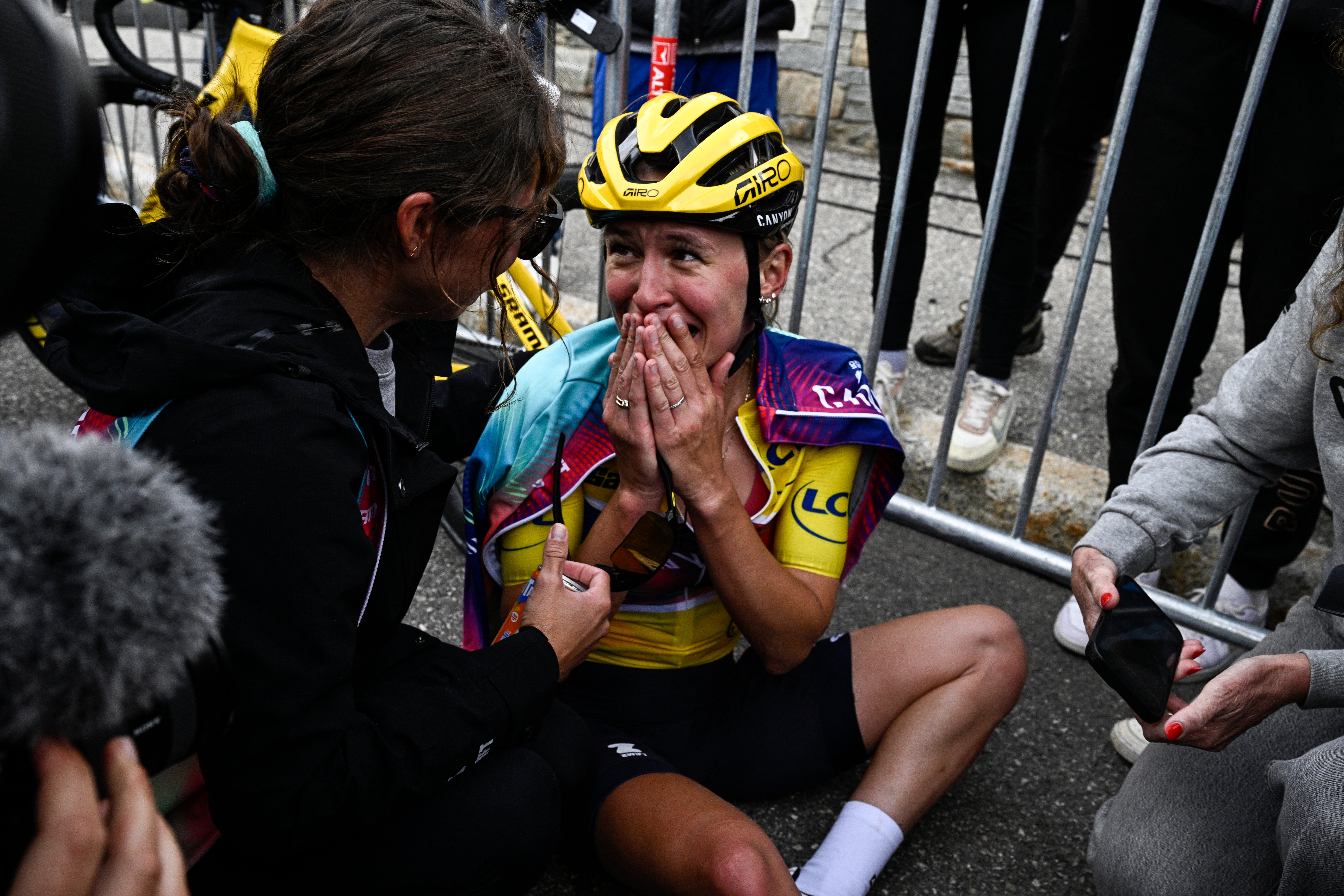
The 2025 Tour de France and Tour de France Femmes routes have been revealed.
The men’s race will begin in Lille in northern France and return to Paris for the traditional procession to a finish on the Champs-Elysees, having ended with an individual time trial in Nice this year to make room for the 2024 Olympic Games. The race will take place entirely in France for the first time since 2020.
It is in many ways a typical route for the modern Tour de France, with a mixture of flat and punchy parcours in the opening days mixed with some challenging hilly rides, before two chunks of strikingly hard climbing in the Pyrenees and the Alps. There are two individual time trials, the second of which is an 11km ascent that has the potential to shake up the standings on stage 13.
The high mountains will be theatres for drama between the yellow jersey favourites, most likely Tadej Pogacar and Jonas Vingegaard, and Vingegaard will be happy to see plenty of gruelling days that play to his strengths. Then again, Pogacar’s historic season has shown that he does not really have a weakness, and he is unlikely to be fazed by any of the climbs on offer. If both riders can stay injury free through the season then this Tour has all the ingredients for another epic instalment of one of road cycling’s great rivalries.

Stage one is a flat day giving a chance for a sprinter to take the yellow jersey, and kicking off a first week which will take in Dunkirk at the northern tip of the country before snaking across to Normandy and Brittany, where the stage-five individual time trial is a 33km flat ride around Caen. The stage-seven finish on the Mur de Bretagne will offer a first look at the strength of the main contenders.
The peloton will move into central France where the hills of the Massif Central could throw up some fireworks on stage 10, culminating on the Puy de Sancy, before a well-earned rest day.
Then comes the most eye-catching phase of the route where the race could be won and lost: three testing, gruelling days in the Pyrenees, back to back to back. Stage 12 finishes at Hautacam where Vingegaard crushed a broken Pogacar en route to victory two years ago; stage 13 is an intriguing mountain time trial, an 11km race against the clock up the Peyragudes; stage 14 confronts the Pyrenees’ infamous ‘circle of death’ climbs including the Col du Tourmalet, Col d’Aspin and Col de Peyresourde before a summit finish at Luchon-Superbagneres.

After the second rest day, the road kicks high again with an ascent of the legendary Mont Ventoux and its eerie lunar landscape on stage 16, before a sprint day to tee up the savage queen stage 18 in the Alps: 5,550m of elevation over the Col du Glandon, Col de la Madeleine and finally the Col de la Loze.
Stage 19 is shorter but no less tough, with more monstrous climbs leading to a high finish at La Plagne. The flat jaunt of stage 20 along the east of France will be a welcome relief, before the climax in Paris.

The women’s nine-day route does not feature an iconic giant climb at its finale, so there will be no repeat of the dramatic scenes this summer which saw Kasia Niewiadoma pip Demi Vollering by four seconds atop Alpe d’Huez.
However, stage eight is a brutal summit finish on the the Col de la Madeleine (18.6km at 8.1 per cent) and the closing stage nine features the tough Col de Joux-Plane (11.6km at 8.5 per cent) with its fast descent to Morzine, before a long, leg-sapping climb to the finish line at Chatel les Portes du Soleil where the winner will be crowned.

The race will begin on the final Saturday of the men’s race and includes two flat stages, three hilly rides, two medium mountain days before those fascinating final two stages in the high peaks of the Alps.







